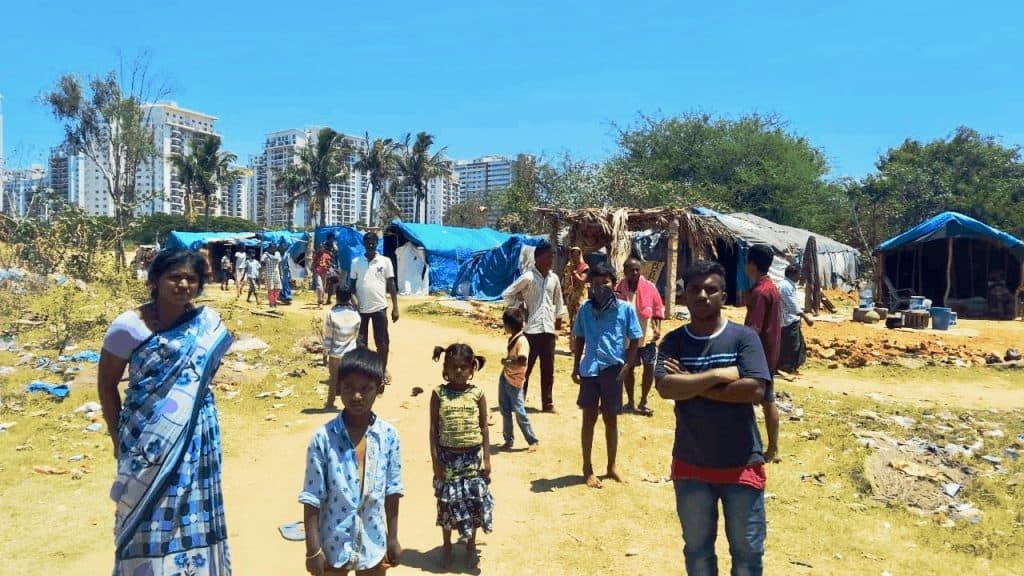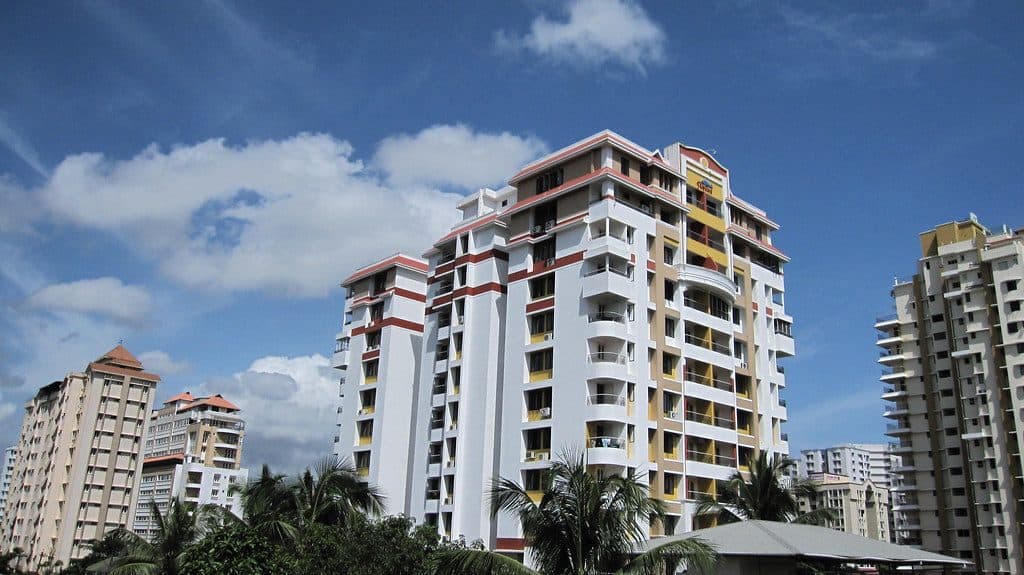The first urban commission in 1988 visualised development of cities by linking them with manufacturing and industrialisation. The current scenario, however, is more service-driven where the bargaining power of the workers’ vis–a–vis the state has shrunk drastically. Basic necessities considered as essential deliverables by the state are being privatised. Housing, water, health, education and such other sectors have seen massive privatisation, both vertical and horizontal, leading to an ever widening gap between the urban rich and the poorer working class.
In this process, the organised strength of the urban working class has been weakened and more informalisation has crept in. Indian cities have nearly 450 million migrants, which amounts to nearly 30% of the total population. But despite this large number, there is as yet no concrete policy for migrant workers. Even the minimal social security net available to some is completely missing for migrant workers, as was visible during and after the first lockdown when they literally were forced to walk back home.
Another important fallout of the lockdown has been the fall in gross value addition in most sectors of the economy, leading to unemployment/decline in employment. The worst affected were workers in construction (–50%), trade, hotels and other services (–47%), manufacturing (–39%), and mining (–23%).
It is important to note that these are sectors that create the maximum new jobs. In a scenario where each of these sectors is contracting so sharply resulting in output and incomes falling, it would lead to more and more people either losing jobs (decline in employment) or failing to get one (rise in unemployment).
Read more: What the Jal Jeevan Mission must focus on to fix urban water supply
The consequence of all this, according to Suresh Babu and Chandan in The Hindu, is that informality continues to undermine the probability of reducing poverty among the urban poor. In fact, the latest figures show that poverty has in fact grown in the last 18 months.
It has become almost a cliché to say that 80% of the country’s workforce is in the informal economy. According to government figures, 4% of these are contract workers. Only one in five has a monthly salary job. Half of this workforce is self-employed.

Under the circumstances, it is imperative that some sort of urban employment guarantee scheme be launched to arrest rising joblessness. There should be investment in infrastructure, but not in large capital-intensive technologies but in labour-intensive projects, particularly improving municipal infrastructure. The capacity of the rural economy to absorb workers who returned from cities is low and the viability of agriculture to provide these workers with a decent living is questionable. So labour intensive urban employment schemes like large scale rejuvenation of long neglected water bodies in urban areas should be considered.
The present push for more market-oriented housing has to be reversed. Since 2014, the share of public housing dropped from 6% to 3%. It should not be less than 25% if the goal is to achieve inclusive housing. No wonder that nearly 50 million among the urban working class are without proper homes, while the proliferation of slums in the bigger cities continues unabated with 40% of the urban population living in slums. In a sample survey of 4,763 migrant workers from Delhi who went back during the lockdown, 86% were living in rented jhughi jopdi colonies. Only 4% had a place to stay at their worksite.
In another large survey of over 11,550 workers across India who returned to their villages, 80% were wage, factory/construction workers. Daily average wages were between Rs 400-Rs 460; 72% had ration in store for just two days; 89% were not paid wages during the lockdown; 75% lost their livelihoods and 53 per cent were bearing additional debt burden.
Read more: Why citizen groups want more time to respond on the draft Delhi Master Plan 2041
The PMAY scheme of housing for all fell short of its target. In 2020-21, only 5.4% of the target was achieved. There are four verticals in PMAY. In one of them, the ARHC i.e., affordable rental housing, 80,369 houses were supposed to be built, only 1,703 were constructed.
Interestingly, a 2020 survey by JLL, a commercial real estate company, shows that 4.6 lakh properties worth Rs 40 lakh crore are ready but there are no buyers. Likewise, the RBI has estimated that 9.5 lakh properties worth Rs 80 lakh crore are stuck in the construction stage.
The pandemic also highlighted shortcomings in the state’s social structure. According to two primary surveys done by civil society groups, 83% of the total relief camps were run by non-state actors and only 17% by the state.
Even the middle class were badly hit. In various condominiums in a city like Gurgaon, the maintenance costs per house have gone up to Rs 7,000 from Rs 5,000. Likewise, for electricity, the per-unit cost is now Rs 21 for the earlier Rs 17.
All this has trapped the urban workforce in huge debt, with average household debt jumping from 32.5% in 2018 to 38% in 2021.

Crushing economic burden
The XVth Finance Commission has made it clear that cities/town that do not start collecting and incrementally increasing property tax will lose their grants. Already Tamil Nadu and Andhra Pradesh are reeling from the pressure of increasing property tax rates. Not just property tax, there is also an incremental increase in utility charges.
Water is one area, after sanitation, that is being targeted by the centre for privatisation. Under the Jal Jeevan Mission (JJM), the target is to provide potable tap water to every house by 2024. Absolutely necessary and fine. But the way this is being done is quite contrary to the intent. For instance, the JJM advocates equity participation of users, meaning people pay for their water. The transition in water management from the principle of ‘water is a right’ to ‘water is a need’ is evident in JJM and the need can be fulfilled by any service provider, private or public!
In fact, the model being emulated is Telangana’s Mission Bhagiratha model, which uses capital intensive technologies and has a budget of over Rs 50,000 crore, with 80% of the money borrowed from the market.
The Master plans of a few large metros which are being updated, too, show a dramatic shift in approach. Two states have interesting developments. Delhi, the new master plan marks a shift from the Nehruvian planning model to corporate-driven planning. The focus is on TOD (Transit Oriented Development), the new mantra for urban development which makes scant provision for the poor and working class.
The other state that portrays a new urban development model with principles laid out by multilateral agencies is Tamil Nadu where the World Bank is guiding the urban development trajectory. Water, education, health, housing, etc, will all be seen through the prism of monetisation.
Which means the urban poor and working class are caught in a vicious trap — rising costs of even basic services even as they are faced with loss of income and jobs.